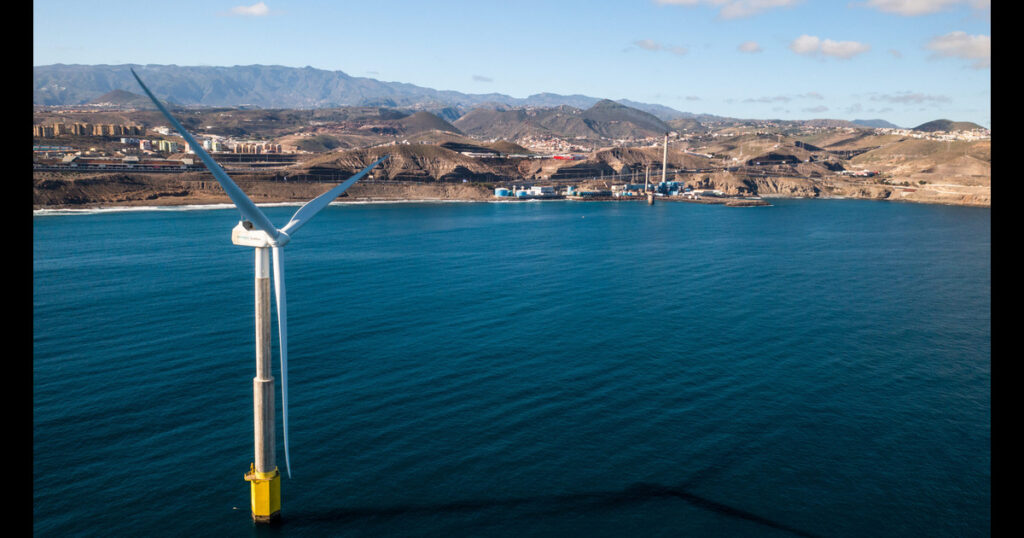The H2Heat project, situated in this unique geographical setting, is pioneering the integration of offshore wind energy to produce green hydrogen, marking a significant stride in the journey toward a carbon-neutral future.
Offshore wind energy stands out for its consistency and strength, offering a reliable source of power that surpasses many onshore alternatives. The H2Heat project capitalizes on this by utilizing the ELICAN platform, a 5-megawatt offshore wind turbine developed by Esteyco. This turbine, anchored off the coast of Gran Canaria, is not just a marvel of engineering but a testament to the potential of harnessing marine winds for large-scale energy production.
The electricity generated by ELICAN feeds directly into a state-of-the-art 1-megawatt electrolyzer. This device performs electrolysis, splitting water molecules into hydrogen and oxygen. The hydrogen produced is entirely green, as the process is powered solely by renewable energy, ensuring zero carbon emissions. This green hydrogen is then utilized to provide heating solutions for local infrastructures, including hospitals, thereby replacing traditional fossil fuel-based systems.
The strategic use of offshore wind energy in the H2Heat project addresses several critical challenges in the renewable energy sector. Firstly, it mitigates the issue of land scarcity, a common hurdle in densely populated or ecologically sensitive areas. By situating wind turbines offshore, the project avoids land use conflicts and minimizes environmental disruption onshore.
Secondly, offshore wind farms benefit from higher and more consistent wind speeds compared to their onshore counterparts. This translates to a more stable and predictable energy output, which is crucial for the continuous operation of electrolyzers and the consistent production of green hydrogen.
Moreover, the proximity of offshore wind farms to coastal industrial hubs facilitates the efficient transport and utilization of generated hydrogen. In the case of H2Heat, the green hydrogen produced is used locally, reducing the need for extensive transportation infrastructure and associated energy losses.
The integration of offshore wind energy into green hydrogen production exemplifies a synergistic approach to renewable energy utilization. It not only enhances the efficiency and sustainability of energy systems but also paves the way for similar models to be adopted globally. As nations strive to meet ambitious climate targets, the H2Heat project serves as a blueprint for leveraging natural resources responsibly.
In conclusion, the H2Heat project’s use of offshore wind energy is a compelling demonstration of how renewable resources can be effectively harnessed to produce green hydrogen. This approach not only contributes to the decarbonization of the energy sector but also offers a scalable and replicable model for sustainable energy production worldwide.



